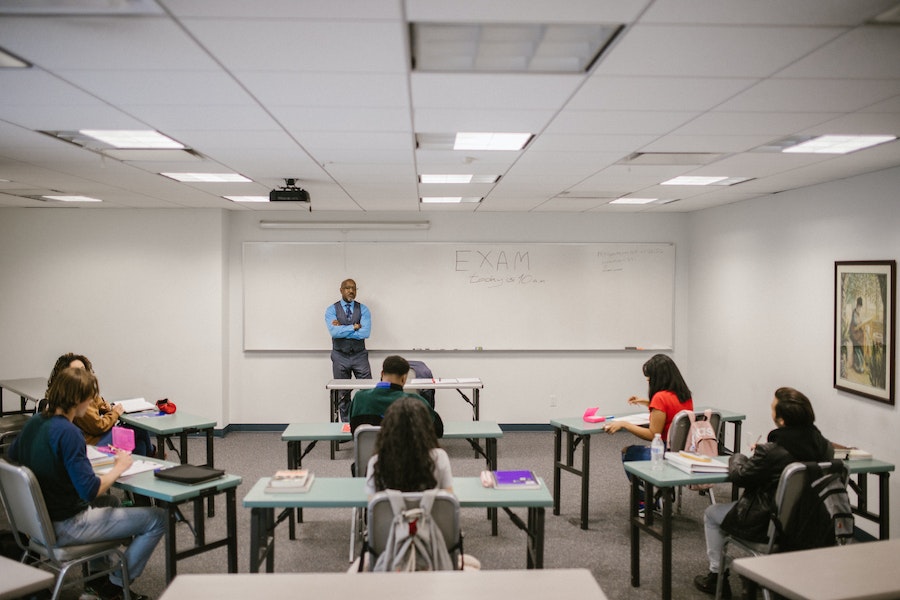It’s no secret that people of different ages have different learning needs and styles. This presents a unique set of challenges and opportunities. Creating a productive environment is crucial, as it fosters a sense of belonging and boosts learning outcomes. However, catering to varied age groups requires careful planning and flexible teaching methods.
Fortunately, today educators can utilize a myriad of tools, like an online poster maker at StoryboardThat to create posters and other visual aids to cater to the learning needs of different age groups. Certainly, posters are not the only way to make the learning process more effective. This article will explore strategies to make a classroom a more welcoming and productive place for students of different ages.
Physical Environment Adjustments
A productive classroom considers the physical environment and how it caters to students of different ages. For younger students, a colorful and interactive setting can stimulate learning. This might involve using posters, charts, and other visual aids.
High school students often require spaces for group projects and individual work. Providing a variety of seating options, like desks and comfortable chairs, can cater to their diverse needs.
Adult learners may appreciate a more professional setting that mimics their workplace. This could mean having access to technology, quiet spaces for focused work, and areas for collaborative discussions.
Incorporating age-appropriate materials and resources in your classroom can make a significant difference in making all students feel accommodated. The role of technology, such as tablets or laptops, can also be crucial in bridging the gap between different age groups and enhancing the learning experience.
Utilizing Technology
Modern technology offers a wealth of resources to make learning more engaging and accessible for students of all ages. Here’s how it can be utilized effectively in different classrooms:
Children’s Classroom:
- Educational Games and Apps: Children often learn best when they’re having fun. Apps like ABCmouse or Prodigy turn learning into a game, making subjects like math and reading more engaging.
- Interactive Learning Tools: Digital tools like Seesaw allow children to document what they’re learning at school through photos, videos, and drawings, promoting creativity and reflection.
- Virtual Field Trips: Exploration is key at this age, and thanks to virtual field trips, kids can explore the world from their classroom. Google Expeditions, for example, offers immersive virtual journeys to far-off lands and even outer space.
Teenagers’ Classroom
- Collaborative Platforms: As teamwork becomes more important, platforms like Google Docs and Microsoft Teams allow teens to collaborate on projects in real-time.
- Research Databases: Resources like JSTOR and Google Scholar offer a wealth of information for assignments and encourage independent research.
- Learning Management Systems: Platforms like Canvas or Google Classroom help organize coursework, facilitate teacher-student communication, and provide a space for digital assignment submission.
Adults’ Classroom
- Online Courses and Webinars: Adult learners often seek self-paced, practical learning experiences. Websites like Coursera, LinkedIn Learning, or Udemy offer a wide range of courses and professional certifications.
- Productivity Tools: Tools like Evernote or Trello can help adult learners manage their time and stay organized, especially if they’re juggling work and study.
- Professional Networking Platforms: For adults, platforms like LinkedIn not only provide learning resources but also opportunities for networking and career advancement.
By integrating these technologies into each classroom, educators can cater to the unique needs and preferences of each age group, making learning a more engaging and personalized experience.
Adapting Teaching Methods
Different age groups often respond best to varied teaching methods. For younger students, learning through play and exploration can be effective. Incorporating activities that allow them to move, draw, or perform can keep them engaged.
High school students, on the other hand, may benefit from more structured lessons. They often respond well to discussions, problem-solving tasks, and projects that require critical thinking.
Adult learners frequently prefer practical, self-directed learning experiences. They appreciate when lessons are immediately applicable to their lives or work.
Differentiated instruction, where teaching methods are tailored to meet individual needs, can be a powerful tool in a multi-age classroom. This might mean offering a range of activities for a single lesson, allowing each student to engage with the material in a way that suits them best.
Building An Age-Specific Classroom Culture
Creating a conducive learning environment involves cultivating a classroom culture that caters to the unique needs of each age group.
In a children’s classroom, it’s crucial to make learning fun and engaging. This can be achieved by integrating play-based learning and creative activities into the curriculum. A structured environment with clear rules and routines is also beneficial for children, as it provides a sense of safety and predictability. Moreover, the development of social skills can be encouraged through group activities and cooperative games.
As we move to a teenager’s classroom, fostering independence becomes vital. This can be encouraged by giving students choices in their work and promoting self-directed learning. Additionally, teenagers tend to learn a lot from their peers, making group projects and peer-to-peer learning activities valuable for enhancing their collaborative skills and deepening their understanding. It’s also important to provide emotional support, creating a classroom environment where students feel comfortable expressing their feelings and concerns.
In the case of an adult’s classroom, the wealth of life and work experience that adult learners bring should be respected and valued. This experience can be incorporated into the learning process, making it more relevant and engaging. Given that adult learners often have multiple responsibilities, promoting self-paced learning can provide the flexibility they need. Lastly, because adults are typically goal-oriented learners, the focus should be on practical skills and knowledge that they can directly apply in their personal or professional lives.
Final Thoughts
Creating distinct learning environments for children, teenagers, and adults is both a rewarding and challenging endeavor. It requires recognizing the unique requirements of each age group and tailoring your teaching methods, classroom culture, and the use of technology accordingly.
The goal is not to apply a uniform approach but to appreciate and cater to the diversity within these different classrooms. This not only enriches the learning journey for each student but also prepares them for real-world scenarios where they will need to interact with people from various age groups and backgrounds.
With careful strategizing and flexibility, you can turn the challenges of age-specific education into opportunities. By doing so, you’ll craft a dynamic, engaging, and inclusive educational space where every student, irrespective of their age, can flourish.





















